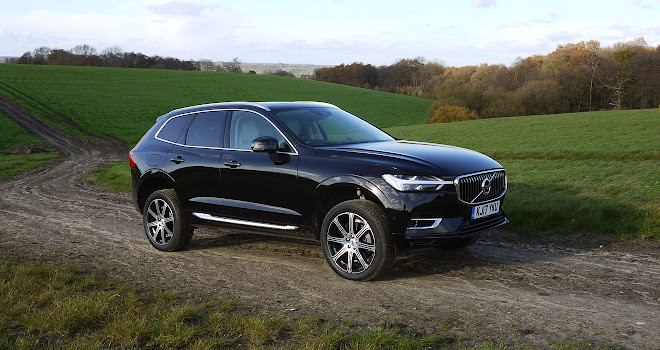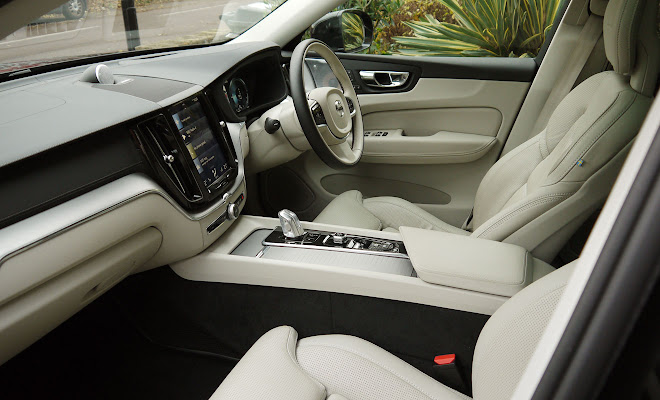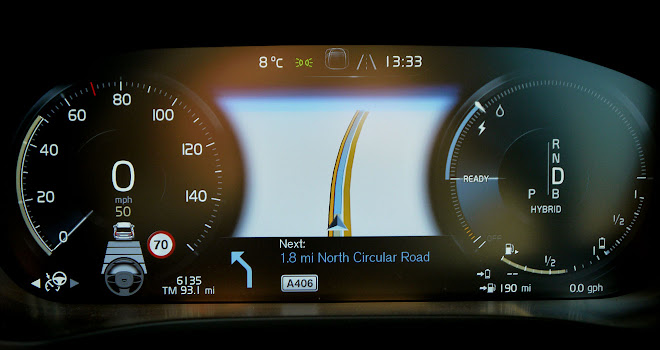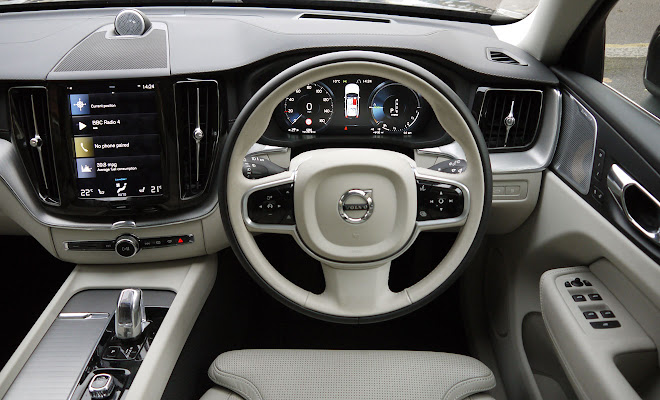
Rating: stars
Good: Refined, classy, quick, clever Pilot Assist system
Bad: No spare wheel, no seven-seat option, not cheap
Price: from £56,850; the version tested cost £66,650
Volvo’s recently launched XC60 is an imposing off-roader that benefits from a peaceful cabin and restful ride. It’s now available with plug-in electric power that promises to improve the car’s fuel economy too, especially over shorter journeys.
In plug-in guise the XC60 gains a 9.2kWh lithium-ion battery installed along the spine of the car. You’ll notice its presence through a shallower-than-usual cubby under the armrest, and a taller lump in the floor between the rear footwells. Slightly more intrusively, the box of electronics needed to recharge the battery also robs the XC60 of space for any kind of spare wheel under the boot floor.

The XC60 is never offered as a seven-seater, so there’s no loss in that respect. For a third row of seats you’ll need to look at the larger Volvo XC90.
The plug-in XC60 edition is called the T8 Twin Engine, a slightly awkward label designed to highlight that it’s propelled by both a combustion engine and an electric motor. Under the bonnet you’ll find a 2.0-litre, four-cylinder petrol unit capable of producing up to 320bhp. It sends this power to the front wheels through an 8-speed automatic gearbox.
The second engine is a 65kW (87bhp) electric motor that drives only the back axle.

Volvo might legitimately have stuck a “Triple Engine” badge on the boot, because there is actually another electric motor, mounted at the front of the car and connected to the engine. Rated at 34kW (46bhp), the front motor is a versatile box of tricks that carries out four different jobs at different times.
It serves as a starter motor; it recaptures energy during braking; it can lend a hand to the engine during acceleration; and it can also serve as a generator – borrowing some of the petrol engine’s power to create fresh electricity whenever the battery runs low.

With two motors plus an engine to play with, it’s no surprise to learn that the XC60 T8 can operate in a variety of different modes.
The simplest mode is called “Pure”, in which the petrol engine is left to slumber and the car acts as a pure electric vehicle (EV), driven by the rear wheels. Range on a full charge is officially 28 miles, though 20 miles proved more realistic during my tests.

Even if you’ve just topped up the battery, you’ll still need to tell the car whenever you want to travel in silent EV-only mode. You do this by pressing a little knurled roller on the centre console and then choosing “Pure” from the list of available modes that will pop up on the 9-inch portrait touchscreen (you can either prod the screen or scroll and click with the roller).
Other options include a Power mode for sporty driving, AWD for slippery conditions, Off-Road for rough tracks and an everyday Hybrid mode.
Hybrid is the setting used by default. In this mode the car will juggle electric and petrol power as it goes along, trying to achieve the best overall economy according to how much mains charge remains in the battery. If you set off on a short trip with a full battery you can expect to see outstanding fuel economy from Hybrid mode. But embark on long journey with a low battery and you might see economy as low as 28mpg. For best results, plug-in and top up the battery as often as possible.

A full recharge takes between 2.5 and 6 hours, depending on what kind of power supply you plug into. Installing a dedicated wallbox at home is the best bet (assuming you have a garage or driveway) though you can resort to a 3-pin socket. Helpfully, Volvo supplies a clever cable that lets you set the current drawn at 10, 8 or 6 amps, to take the pressure off creaky wiring.
When driving, you can get a good idea of what’s happening from the T8’s clever digital instrument panel. The dial on the right is a demand gauge, with a needle that swings according to how much you’re asking from the car. The gauge is divided into electric and petrol sections (marked with a lightning bolt and a liquid drop) and if the demand needle swings into the petrol region the car will need to fire up its engine.

It’s a digital gauge, so the divide between petrol and electric running isn’t fixed. Instead it swings around the dial just like the needle, depending on how fast you’re going and how much charge is in the battery. But the dial always gives a clear indication of how much you can push the car on electricity alone, helping to eke out economy if you wish.
That said, it should be noted that the T8 is the most powerful variant in the XC60 range, so not every owner will want to drive frugally all the time. With a petrol-plus-electric output of 407bhp and 640Nm of torque, the T8 can sprint to 62mph in just 5.3 seconds.

On the road, at any legal speed, the XC60 T8 feels brisk and eager to respond to the throttle. That said, the car has not been set up to feel particularly sporty. Think effortless overtaking, rather than careering around corners.
As mentioned above there’s electric drive to the rear wheels and petrol power for the front wheels, plus the engine-mounted generator to ensure the back paws never run out of juice. As a result, the XC60 T8 can haul itself through mud in 4x4 mode for as long as there’s petrol in the tank.

The car I tested also featured air suspension, fitted as standard to “Pro” trim levels or offered as a £1,500 option, which raises the ride height by 40mm in Off-Road mode, and also sinks by 40mm when the engine is off for easy entry and exit.
Another option worth considering is the £1,500 Intellisafe Pro pack, which provides blind spot and cross traffic monitoring, adaptive cruise control and Volvo’s latest Pilot Assist semi-autonomous technology.
When activated via the wheel buttons, Pilot Assist will take care of the throttle, brakes and steering on motorways and dual carriageways, working up to 80mph and down to a standstill in traffic. I’ve tried it before in other Volvos and not liked it at all, but either I’ve got used to it or Volvo has tweaked the system to make it more reassuring. In short, I found it really welcome during my week with the T8.

You have to keep your hands on the wheel or Pilot Assist will switch off, but that’s a good thing. In fact I found the software needed a guiding hand every now and then, which I suspect may even be deliberate – it seems to need a nudge just often enough to keep you alert and engaged. But the software does enough for you, reliably enough, that it soothes away much of the frustration of a long motorway journey or a slog through stop-start traffic. Your change of role from driver to supervisor genuinely seems to be less tiring.
It helps that the XC60 T8 is also very quiet at any speed, especially when fitted with laminated side and rear glass (a £750 option). It’s also a great place to appreciate music, particularly if you’ve shelled out £2,500 for the Bowers & Wilkins audio upgrade.
Whichever options you choose, the plug-in edition of Volvo’s XC60 is not going to be cheap – T8 prices currently start from £56,850. That’s quite a big hike from the entry level diesel XC60, which starts at £37,205.
However, you do get a lot of car for the price – an EV, off-roader and refined family cruiser all in one.




